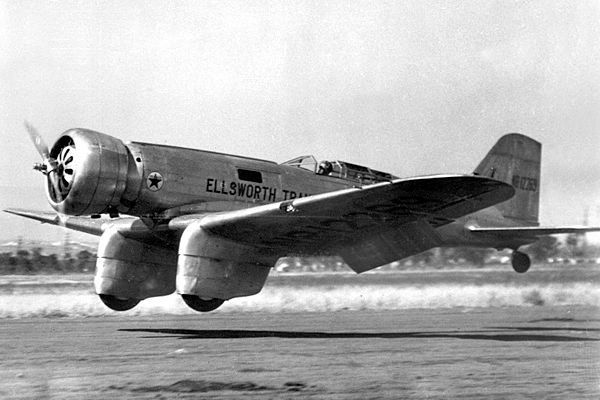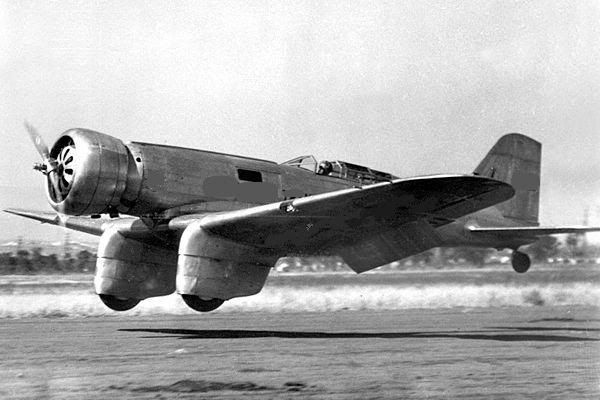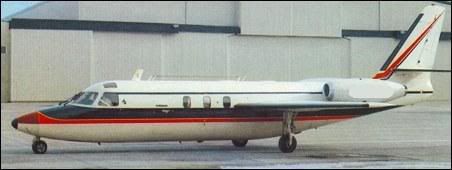Install the app
How to install the app on iOS
Follow along with the video below to see how to install our site as a web app on your home screen.
Nota: This feature may not be available in some browsers.
Je gebruikt een verouderde webbrowser. Het kan mogelijk deze of andere websites niet correct weergeven.
Het is raadzaam om je webbrowser te upgraden of een alternatieve webbrowser te gebruiken.
Het is raadzaam om je webbrowser te upgraden of een alternatieve webbrowser te gebruiken.
FORUMLEDEN met NOSTALGIE......"vreemde" kisten
- Topicstarter steffe
- Startdatum
- Status
- Niet open voor verdere reacties.
Nog iets interessants over dit toestel:
A Travel Air 2000 biplane made the world's first piloted flight under steam power over Oakland, California, on 12 April 1933. The strangest feature of the flight was its relative silence; spectators on the ground could hear the pilot when he called to them from mid-air. The aircraft, piloted by William Besler, had been fitted with a two-cylinder, 150 hp reciprocating engine. An important contribution to its design was made by Nathan C. Price, a former Doble Steam Motors engineer. Price was working on high pressure compact engines for rail and road transport; the purpose of the flight was to obtain publicity for this work. Following its unexpectedly favourable reception Price went to Boeing and worked on various aviation projects, but Boeing dropped the idea of a steam aero engine in 1936. Price later worked for Lockheed where his experience with developing compact burners for steam boilers helped to design Lockheed's first jet engine. The advantages of the "Besler System" that were claimed at the time included the elimination of audible noise and destructive vibration; greater efficiency at low engine speeds and also at high altitudes where lower air temperatures assisted condensation; reduced likelihood of engine failure; reduced maintenance costs; reduced fuel costs, since fuel oil was used in place of petrol; reduced fire hazard since the fuel was less volatile and operating temperatures were lower; and a lack of need for radio shielding. For capacities in excess of 1000 horse power a turbine captures the energy released by the expansion of steam more efficiently than a piston. Thus, the steam reciprocating engine turned out to be unsuitable for scaling up to the needs of large aircraft.

A Travel Air 2000 biplane made the world's first piloted flight under steam power over Oakland, California, on 12 April 1933. The strangest feature of the flight was its relative silence; spectators on the ground could hear the pilot when he called to them from mid-air. The aircraft, piloted by William Besler, had been fitted with a two-cylinder, 150 hp reciprocating engine. An important contribution to its design was made by Nathan C. Price, a former Doble Steam Motors engineer. Price was working on high pressure compact engines for rail and road transport; the purpose of the flight was to obtain publicity for this work. Following its unexpectedly favourable reception Price went to Boeing and worked on various aviation projects, but Boeing dropped the idea of a steam aero engine in 1936. Price later worked for Lockheed where his experience with developing compact burners for steam boilers helped to design Lockheed's first jet engine. The advantages of the "Besler System" that were claimed at the time included the elimination of audible noise and destructive vibration; greater efficiency at low engine speeds and also at high altitudes where lower air temperatures assisted condensation; reduced likelihood of engine failure; reduced maintenance costs; reduced fuel costs, since fuel oil was used in place of petrol; reduced fire hazard since the fuel was less volatile and operating temperatures were lower; and a lack of need for radio shielding. For capacities in excess of 1000 horse power a turbine captures the energy released by the expansion of steam more efficiently than a piston. Thus, the steam reciprocating engine turned out to be unsuitable for scaling up to the needs of large aircraft.

T
Teus
Guest
Travel Air 2000?
Mis alleen die verrekte oliekoeler
:nooo::nooo::nooo:
Sam Junkin was 1 van de bouwers en er kon o.a. een Curtiss OX-5 of een Wright Hispano in als motor.
Gr. Teus
T
Teus
Guest
Idd. MikeV4,
kon niet meer missen toch.
Nog wat verdere info;
Following Buck Weaver's death in 1924, Clayt Bruckner and Sam Junkin reorganized the business and soon introduced the company's popular Model 9 (or Nine) in 1925. Powered by a Curtiss OX-5 or Wright Hispano engine, the WACO Nine delivered better performance than the readily available war surplus Curtiss Jennys at a affordable price.
The WACO 9 was state-of-the-art for its time.
The design of the Nine was state-of-the-art for its time—a fabric-covered wooden wing structure strengthened with welded steel tubing. The front cockpit was equipped with a bench seat that accommodated two passengers with a single cockpit for the pilot in the rear of the aircraft. An engine radiator mounted under the forward edge of the upper wing became a distinguishing WACO trait.
The stylish WACO Nine made a good showing during the 1925 Ford Air Tour. The accompanying publicity quickly translated into increased aircraft sales and 276 Nines were sold between 1925 and 1927. An outstanding barnstormer, more than 14 Nines competed in the 1926 National Air Races with several finishing first in their events. WACO Nines also saw duty as crop-dusters—the airplane could be outfitted with floats for water landing—and were also used as an early commuter aircraft.
Mike aan zet.
kon niet meer missen toch.
Nog wat verdere info;
Following Buck Weaver's death in 1924, Clayt Bruckner and Sam Junkin reorganized the business and soon introduced the company's popular Model 9 (or Nine) in 1925. Powered by a Curtiss OX-5 or Wright Hispano engine, the WACO Nine delivered better performance than the readily available war surplus Curtiss Jennys at a affordable price.
The WACO 9 was state-of-the-art for its time.
The design of the Nine was state-of-the-art for its time—a fabric-covered wooden wing structure strengthened with welded steel tubing. The front cockpit was equipped with a bench seat that accommodated two passengers with a single cockpit for the pilot in the rear of the aircraft. An engine radiator mounted under the forward edge of the upper wing became a distinguishing WACO trait.
The stylish WACO Nine made a good showing during the 1925 Ford Air Tour. The accompanying publicity quickly translated into increased aircraft sales and 276 Nines were sold between 1925 and 1927. An outstanding barnstormer, more than 14 Nines competed in the 1926 National Air Races with several finishing first in their events. WACO Nines also saw duty as crop-dusters—the airplane could be outfitted with floats for water landing—and were also used as an early commuter aircraft.
Mike aan zet.
prop-er
Forum veteraan
Northrop Gamma




[FONT=Verdana, Arial][SIZE=-1]In January 1932 John Northrop and Donald Douglas formed the Northrop Corporation as a partly-owned subsidiary of the Douglas Aircraft Co. The first aircraft from the new corporation was the Northrop Gamma, several of which were built to special order for record-breaking flights and research work. The first two aircraft, a Gamma 2A and a Gamma 2B, were powered respectively by a 585kW Wright and 373kW Pratt & Whitney Wasp radial; both were delivered at the end of 1932, the first to Texaco who loaned it to Frank Hawks for record-breaking flights and the second to Lincoln Ellsworth, who eventually used it for a transantarctic flight. TWA bought three Gamma 2D aircraft with 529kW Wright Cyclone engines as single-seat mailplanes in 1934. The second was later reengined with a 578kW Wright and was used by Texaco to test oil temperatures and flows before being sold to the US Army Air Corps, which designated it UC-100. [/SIZE][/FONT]
[FONT=Verdana, Arial][SIZE=-1]A number of Gammas were delivered to individual customers, including two to the UK, a 2E for the Aeroplane & Armament Experimental Establishment and a Gamma 2L, the last to be built, was used by the Bristol Aeroplane Co. as a test-bed for its Hercules engines. The Chinese government ordered 24 Gamma 2E aircraft as light bombers, with 529kW Wright engines; they could carry a 726kg bombload and had four 7.62mm forward-firing machine-guns in the wings, and one rearward-firing in the rear cockpit. A further 25 Gamma 2Es were assembled in China from components provided by Northrop. [/SIZE][/FONT]
het achterste landingsgestel ziet er redelijk fragiel uit....
Dat zullen wel pogo wieletjes zijn net als op de U-2 en Harrier
anders twijfel ik er aan of "het" echt gevlogen heeft


Skyhigh
prop-er
Forum veteraan
Uhm..dat was het enige wat ik niet gecheckt had....Nee dus.
Het is de Yak-1000.

Vervangende opgave:

Het is de Yak-1000.
The Yak-1000 was a high-speed research aircraft. It was the smallest aircraft that could be buit around the powerful AL-5 engine, with a tubular fuselage, a circular nose intake, short-span cropped-delta wings, and bicycle landing gear. The outcome of high-speed taxying trials was such that it was not attempted to fly the Yak-1000.
Vervangende opgave:

Yak-25RV
H
igh altitude reconnaissance (so 'RV' for Razvedchick Vysotnyj) version of the Yak-25. Project of this unarmed aircraft started in 1957. Yak-25RV got a new straight wing, having a span of 23.4m (more than twice compared to the predecessor) and area 55m2. As a result, the wing load turned less than for piston-engined Yak-3 fighter.
Test-flights at Flight-Research Institute (LII) (leading test-pilot V.P.Smirnov and test-pilot A.A.Scherbakov) were performed between March 1 and May 29 1959. Performance was quite good (see table), but at altitudes above 19600m sustained flight was not achieved due to engines spontaneous cut-off. Serious critics was addressed to pressurized suite SI-3M. V.P.Smirnov faced another high altitude peculiarity: it was very difficult to get back down due to very high airdynamic quality of the 'glider'. In one of flights pilot had to lower landing gear to force Yak-25RV to return home.
Another problem of aircraft was extremely narrow 'speed corridor' at stratospheric altitudes: difference between maximum (vibrations) and minimal (lost longitudinal stability) was only 10km/h. It imposed very heavy workload on pilots. But VVS Command had no other options, and production started. Yak-25RV and its modifications were in service for 15 years, replaced by high-speed MiG-25 reconnaissance derivatives.
H
igh altitude reconnaissance (so 'RV' for Razvedchick Vysotnyj) version of the Yak-25. Project of this unarmed aircraft started in 1957. Yak-25RV got a new straight wing, having a span of 23.4m (more than twice compared to the predecessor) and area 55m2. As a result, the wing load turned less than for piston-engined Yak-3 fighter.
Test-flights at Flight-Research Institute (LII) (leading test-pilot V.P.Smirnov and test-pilot A.A.Scherbakov) were performed between March 1 and May 29 1959. Performance was quite good (see table), but at altitudes above 19600m sustained flight was not achieved due to engines spontaneous cut-off. Serious critics was addressed to pressurized suite SI-3M. V.P.Smirnov faced another high altitude peculiarity: it was very difficult to get back down due to very high airdynamic quality of the 'glider'. In one of flights pilot had to lower landing gear to force Yak-25RV to return home.
Another problem of aircraft was extremely narrow 'speed corridor' at stratospheric altitudes: difference between maximum (vibrations) and minimal (lost longitudinal stability) was only 10km/h. It imposed very heavy workload on pilots. But VVS Command had no other options, and production started. Yak-25RV and its modifications were in service for 15 years, replaced by high-speed MiG-25 reconnaissance derivatives.
- Status
- Niet open voor verdere reacties.






